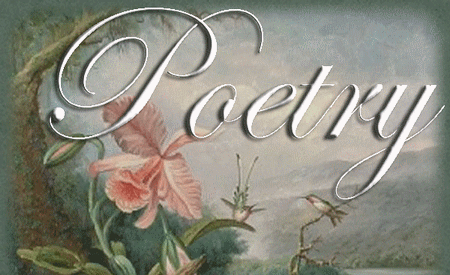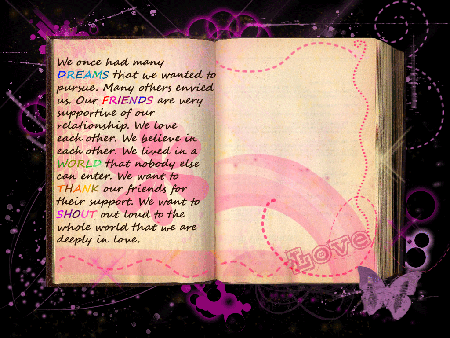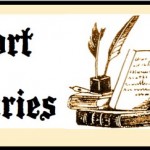Literature according to oxford dictionary is a piece or pieces of writing that are valued as work of arts such as novels, poems and plays. Literally, literature is defined as ‘acquaintance with letters’. It is known as the art of written work. Different civilizations have their own literature. For instance, we can find several literature types in different parts of the world such as English literature, Greek, Latin, Roman, African, Indian, American, French, Irish, Spain, Chinese, Italian, Japanese, Persian, Sanskrit, Nepali, Russian and Canadian literature. Literature rules the mind of the readers. It has a great influence on the readers mind. Italian literature includes the age of Michelangelo and Leonardo da Vinci, while Greek literature is all about Greek Gods and Goddesses.
Similarly, in English literature we can see Romanticism of Wordsworth which is all about nature and is in complete contrast to classicism. Literature don’t remain the same, it keeps on changing according to the age and time. Some old features are left out and new ways are adopted; however, the real feel of the literature is kept intact.
Kinds of Literature
Literature is classified into two main categories: fictional literature and non-fictional literature. These two further subdivided into different types. Let us have a look on some of the major types of fictional and non-fictional literature.
Fictional Literature:
Drama
It is a genre of fictional literature which is written in dialogue form and acted on stage. It normally comprises of 5 acts. The drama can be a tragedy, comedy or melodrama. The different types of drama include monologue, comedy of manners, problem play, fantasy and farce. William Shakespeare is a renowned English dramatist, who wrote the popular Hamlet, King Lear (combination of comedy and tragedy), and Romeo Juliet etc.
- Tragedy: Tragedy is a genre of literature which involves a sad ending. This sort of plays usually involves a lot of instances of tragedy, struggle and feel of horror and normally ends with the death of a person. Two famous Greek tragedies include ‘The Illiad’ and ‘The Odyssey’ by Homer.
- Comedy: Comedy is a genre of drama, where a lot of laughter exists. It has a soft theme in which different elements are expertly handled such as a comic view of life, romanticism, surprises and exaggerations.
- Melodrama: Melodrama is a combination of two terms, i.e. Melody and Drama. Such sorts of plays were popular in 1840. Uncle Tom’s Cabin is an apt example of melodrama genre.
- Tragicomedy: Tragicomedy is a play that starts with serious notes and gradually shifts to comedy element as the play proceeds.
Prose Literature
Prose literature is a type of literature which includes: children’s literature, history, journalism, philosophy, fiction and fantasy writings, scientific writings.
Myth
These are in fact fairy tales including a lot of adventure, magic without any scientific proofs. Myths are often taken as legendary stories or even false stories. Some of the popular forms of myth among children include rhymes, lullabies and songs. There are some creative and nature myths related to stars and moon. Hero myths express the stories of hero’s adventures and tales of quests and fantasy are expressed through magic tales.
Short Story
Short story is form of short commercial fiction, which can either be true or imaginary. It is usually shorter than novel. Short story is complete in itself as it has a proper beginning, a solid theme, dialogues and a formal ending.
Novel
It is genre of fictional literature, a long story usually based on imaginary characters or events. A novel can be adventurous, comic, crime, romantic or a political story. It has many different types given below:
- Allegory: It is a long narrative story or play in which events and characters are presented in a symbolic way. An allegory normally conveys two meaning, one is conveyed meaning and the other is hidden meaning. The two important forms of allegory include Political allegory and Historical allegory.
- Comedy: Comedy novels are often rich in satire element where a negative aspect of a society is taken and is then mocked.
- Epistolary: These are related to epistles, i.e. it is a collection of letters and mails. The most apt examples of epistolary novels include the Henry Fielding’s Joseph Andrew and Samuel Richardson’s Pamela.
- Feminist: Feminist novels are mostly written by women authors and normally reflect the women status in the male dominant society. An apt example is that of A Room of one’s Own by Virginia Woolf.
- Gothic: Gothic novels are a representation of both romance and horror. Gothic novels are known for their mysterious approach.
- Ironic: Ironical novels usually contain an element of sarcasm. A narrative technique is a major feature of these novels. The theme of these novels is basically a satire on the vices prevailing in the modern society.
- Realism: These novels focus on sharing the truths regarding society and prevailing problems. It has a proper plot and a structure.
- Romance: Romantic novels as the name suggests are all about the subjects related to love and relationship. The romantic novels have their origin in western societies. These novels present the love affairs of the main characters. Paranormal, multicultural, erotic, inspirational, suspense are the other genres of romantic novels.
- Narration: Narrative novels are written in a narrative form where an author plays a role of third person.
- Naturalism: Naturalistic novels normally revolve around the theory of Darwin.
- Picaresque: picaresque novels are the complete opposite of romantic novels where a theme reflects the principles that reject the prejudices present in the society.
- Psychological: The theme of these novels focus on the psychological perspective of the mind.
- Satire: Satirical novels are written in a view to criticize the modern societies. Some of the popular novels of this genre include Gulliver’s Travel (1726) by Jonathan Swift, Animal Farm and Randell by George Orwell and Lucky Jim by Kingsley Amis.
- Stream of Consciousness: It is a complex form of novel that deals with the thoughts f the readers mind. James Joyce is known for writing stream of consciousness novels.
Novel also cover the aspects of social and political class such as social philosophy novel, proletarian, Marxist novel, psychological, protest novel, government, didactic, materialist novel, allegorical novel, novel of engagement, naturalistic novel, radical novel, anti-war novel, utopian novel, futuristic novel, anarchist novel, problem novel, novel of ideas, revolutionary novel, problem play and speculative novel.
Folk Tale
Folk tales are a type of fictional literature popular among people of all ages. These are basically traditional stories that have a theme of revolving around the religion, magic and superstition. Some of the subcategories of folk tales include fable, cumulative, tall tales, proverbs, and tricksters. Robin Hood is an apt example of folk tale.
Poetry
Poetry is another genre of literature and is defined by Wordsworth as ‘the spontaneous overflow of powerful feelings recollected in the tranquility.’ There are several different types of poetry. For instance, Greek poetry is known for its free verse and Persian Poetry is known for its rhyme.
Non-fiction Literature:
Nonfiction literature is more informative than fictional literature. Non-fictional literature provides its reader with facts along with analysis and illustration.
Some of the important types of non-fictional literature are given below:
Autobiography and Biography
When an author present the story of his/her own life in the written form, it is called autobiography. Some of the examples include: Family Life at the White House by Bill Clinton, Mein Kamf by Adolf Hitler and Wings of Fire by Dr. A.P.J Abdul Kalam.
Essay
An essay is a form of literature in which an author presented as detailed information about any specific topic in an analytical way. Essays are long, expressive, comparative and subject-oriented. Some of the important types of essays include: observation essay, comparison type of essay, critical essay, interview essay, reflective essay, personal essay, expository essay type, response essay, evaluation, application essay, process essay, persuasive essay, argumentative essay, compare and contrast essay and narrative essay type.
Literary Criticism
Criticism is an important part of any literature. In criticism, critics give their judgments about any piece of literary work by employing different techniques like theories, evaluation, and discussion. Plato, Aristotle, Samuel Johnson, Saussure, Frye, T.S Eliot are names of popular critics.
Travel Literature
The travel literature is a description work of a tour or journey along with the account of important events, dates, places, sights and writer’s prospects. An apt example of such work is that of Francis Bacon’s natural philosophies.
Diary
Diaries are basically a written account of daily occurrences of the writer. With this form of writing, writer has no aim to publish them. One apt example of this form of non-fictional literature is Diary of Young Girl by Anne Franks published in 1940s by her father. Diary reveals a story of a young girl entrapped during German’s invasion over Amsterdam.
Journal
Journal is known as a type of diary which contains limitless amount of information. Some of its types are:
- Personal: This sort of journal is written for personal analysis.
- Academic: Academic journals are for students doing research work or thesis.
- Creative: These are related with imaginative work in form of story, poem etc.
- Trade: Trade journals are commonly used in industry.
- Dialectical: It is a kind of double column notebook used by the students to note down facts and figures about experiment and related observations.
- Newspaper: Certainly, you will all have a clear idea that newspaper is a collection of daily or weekly news.
- Magazine: Magazine is about anything from current affairs or opinions to showbiz, cooking etc.
Frame Narrative
Frame narrative is a literature which contains the psychoanalysis of human mind. It is a story within another story such as Pegasus, Wuthering Heights, The Flying Horse, A Time to Keep, The Three Pigs and The Tasha Tudor Book of Holidays.
Outdoor Literature
The entire exploration of any event presented in written form is known as outdoor literature. The apt examples of this sort of literature include: Mark Twain’s ‘The Adventure of Tom Sawyer’, Robert Louis’ Treasure Island, Richard Hakluyt’s Voyages and Eric Newby’s ‘A Short Walk in the Hindu Kush’.







